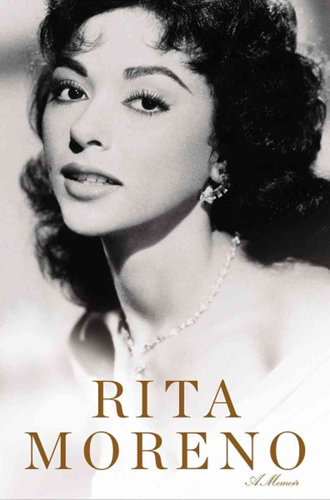Rita Moreno’s book is touching survivor’s story

Fans eager to learn what it was like to dance for Gene Kelly (in “Singin’ in the Rain”), share a soundstage with Yul Brynner (in “The King and I”) and perform the choreography of Jerome Robbins (in “West Side Story”) aren’t likely to be satisfied with Moreno’s brisk treatment of her work.
Yet, Moreno wasn’t shaped by the roles she played. She focuses her story on a journey of self-discovery, and it’s that introspection that gives her memoir its punch.
Her success story is so American. Her mother brought 5-year-old Rosita Dolores Alverio to the United States from Puerto Rico to seek a better life - as much or more for herself as for her daughter. She left her husband (the first of five) and her young son in Juncos, a village little Rosita saw as a sensual place of beauty and wonder amid the El Yunque rain forest.
New York City was a forest of a different sort, cold and indifferent with overt racism. Rosita didn’t speak English when she arrived, further marking her as an outsider, but she learned the language - and how to dance.
Guided by Paco Cansino, Rita Hayworth’s teacher and uncle, Rosita began performing at 9 and dropped out of school as her career blossomed. The stage name Rosita Moreno was one of two legacies from a stepfather she despised. The other was a house in the Long Island suburbs, far from the ethnic ghettos of the city, which gave her a softer view of American life.
MGM studio chief Louis B. Mayer declared Moreno to be “a Spanish Elizabeth Taylor” and hired her. The first movie star she met in Hollywood was Clark Gable, who told her: “Rosita. Great name, kid.” A casting agent disagreed, deciding that it was too Italian and changing it to Rita.
The sweet and sour flavors of ethnicity were never far away. Moreno was a talented beauty but pigeonholed in films as a “spitfire” or some other kind of exotic nonwhite. Even after she won an Oscar as a supporting actress in “West Side Story,” released in 1961, many doors remained closed. As she neared and then passed 40, she fought to continue her career in spite of the burdens of age and ethnicity.
No wonder Moreno, now 81, thought from the beginning that it would all come crashing down eventually. Outward confidence aside, she was bedeviled by doubts and fears and secretly believed that she was faking it all. AP
Rita Moreno: A Memoir
Author: Rita Moreno
Genre: Memoir
Publisher: Celebra










with the Korea JoongAng Daily
To write comments, please log in to one of the accounts.
Standards Board Policy (0/250자)